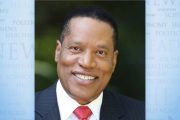
“The United States may have run up a huge debt, but it is not a poor country…,” the Washington Post announced on Monday as Our Rulers hit their credit-limit. “The federal government owns roughly 650 million acres of land, close to a third of the nation’s total land mass. Plus a million buildings. Plus electrical utilities like the Tennessee Valley Authority. And an interstate highway system.”
Ergo, “economists of a conservative or libertarian bent” advocate liquidating some of those assets. “Why … should the federal government be in the electricity business?” the Post asks even as it chuckles that of course, “no one advocates selling Yellowstone”; goodness, even libertarians aren’t that crazy!
Actually, plenty of libertarians and anarchists are indeed that principled. Selling Yellowstone and everything else government “owns” (does a thief truly own what he buys with his victims’ plunder?) makes sense on all levels, practically, constitutionally, morally.
Statism relies on many preposterous presumptions. Chief among these is citizens’ imbecility. We are too stupid and wicked to breathe: but for government’s benevolently restraining hand, we’d kill one another or ourselves. And thanks to our blind greed for profits, we amplify our evil foolishness when we band together to produce goods or services.
Here and there, enlightened folks save themselves by ascending to governmental office. Whether elected or appointed doesn’t matter; when Mr. Former Citizen seeks salvation from the State, he automatically becomes Einstein to our Forrest Gump. Governing imbues him with such superiority that he can ruin — sorry, run our lives for us.
It follows that only politicians and bureaucrats boast the smarts to manage such treasures as Mammoth Cave or the Everglades. Indeed, statists often incredulously demand, “If we didn’t have government, who would run the national parks? You can’t turn those over to private parties — they’d build a mall in the Grand Canyon or condos overlooking Niagara Falls!”
Right. And millionaires never grab a hammer when they notice a nail working itself loose on the yacht: they just pound it back in place with their diamond ring.
Silly, isn’t it? And yet statists believe this is how the world operates, that only politicians and bureaucrats recognize the best use for a resource. We mere mortals squander it on a lesser utility.
Of course, that means we forgo some of the profits -— just as our millionaire may drive a nail home with his jewel, though with a heck of a lot more time and frustration than if he’d relied on a hammer. Statists steeped in Marxism or Keynes’ nonsense ignore this inherent contradiction: the entrepreneurs they accuse of overwhelming avarice will preserve rather than develop the Grand Canyon precisely because the former makes more money.
Five million people visit the Canyon every year; “most” pay $25 per vehicle or “$12.00 per person” if “entering by foot, bicycle, motorcycle, or non-commercial group.” Obviously, these prices are nothing more than a bureaucrat’s whim; they don’t reflect reality in part because taxes subsidize the national parks -— $3.3 billion in FY2012, according to the National Park Service’s (NPS) “budget request.”
The NPS doesn’t define “most”; let’s say half of the Grand Canyon’s sightseers came by car at $25 and the other half forked over $12. Even this conservative estimate amounts to a whopping $92.5 million annually.
Would a mall in the Canyon earn even half that? Given the rugged, remote terrain, probably not. A few shoppers might deem the location worth the drive; more would probably balk at the high prices. The challenges of building in such an unusual area, supplying electricity and water, and shipping inventory would send the costs of goods soaring. The mall might survive on its novelty for a few years; venture capitalists likely wouldn’t bet on it for longer.
We can also contrast the Canyon’s existing revenues with those for a corporation that counts shopping malls among its assets. You’ve probably patronized some of the Simon Property Group’s tenants: the company “owns or has an interest in 392 properties comprising 263 million square feet of gross leasable area in North America, Europe and Asia, … employ[ing] more than 5,000 people worldwide.” Yet all those properties yielded a mere $3.783 billion in 2008 — just 40 times as much as our lowball appraisal on the Grand Canyon though it comprises 392 times as many investments.
Yes, the comparison is flawed. The government’s “prices” at the Grand Canyon — and everywhere else — aren’t true ones. An entrepreneur operating the Canyon would almost certainly charge more or less; he would probably introduce off-season discounts, coupons, refunds for poor weather. Even so, there’s enough of a margin here to assert that the Grand Canyon’s highest value, the use that will return the most profit, lies in its unique landscape.
Nor need we fret that billboards and fast-food joints will litter the Canyon since they will destroy the vistas luring patrons. And those who would damn an entrepreneur for constructing hotels should blast Leviathan, too: the beast not only “authorize[s]” Xanterra Parks & Resorts, Inc. to administer “six distinctive lodges … within walking distance of the South Rim,” it also allows the company to “provide many [other] visitor services within the park,” such as “the legendary ‘Phantom Ranch’ on the floor of the canyon” and, horror of horrors, “retail shops in … historic buildings.” [Emphases added.]
It seems, then, that if we want pristine natural beauty, government is the very last manager to which we should entrust such prizes. Perhaps that’s why the Constitution never empowers the Feds to establish a chain of nationalized parks.
Nor does morality. Though the Fifth Amendment requires the central government to pay owners “just compensation” when it swipes private property “for public use” (with Art. I, Sec. 8 implying such “use” extends only to “Forts, Magazines, Arsenals, dock-Yards, and other needful Buildings”), the Feds are notorious for offering mere pennies on the dollar – when the property is for sale. Often it isn’t: owners may refuse to sell an heirloom handed down in their family, in which case Our thieving Rulers hold eminent domain’s gun to their heads.
Then, too, some nationalized parks are battlefields – New York State’s Saratoga, Gettysburg in Pennsylvania. Before they hosted armies, these areas were farms and homes.
Alas, the NPS doesn’t restrict its thievery to commemorating eighteenth- and nineteenth-century wars. It is currently robbing seven Americans of their property for a “Flight 93 National Memorial”; among the prey is “a Lutheran pastor who owns two parcels, including one that has a cottage where he and his wife planned to retire…”
None of us can predict what may happen near our homes or businesses. Allowing government to steal other people’s property jeopardizes ours, too.
“Experience your America,” the NPS urges. Thanks, but it’s not mine in any way.



